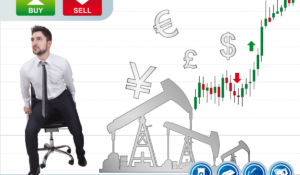Introduction
When it comes to options trading, understanding the difference between call options and put options is crucial. Call and put options are financial derivatives that provide investors with the opportunity to profit from price movements in underlying assets, such as stocks, indices, commodities, or currencies. In this article, we will delve deeper into call options and put options, exploring their definitions, workings, trading strategies, benefits, and risks.
1. What is a Call Option and How Does It Work?
1.1 Call Option Basics
A call option is a financial contract that gives the holder the right, but not the obligation, to buy an underlying asset at a specific price (strike price) on or before a predetermined date (expiration date). The holder of a call option expects the price of the underlying asset to rise. By purchasing a call option, investors can potentially profit from the price appreciation of the underlying asset without directly owning it.
1.2 Trading Strategies for Call Options
There are various trading strategies that utilize call options, including:
- Long Call: This strategy involves buying call options with the expectation that the price of the underlying asset will increase significantly. It allows investors to participate in the upside potential while limiting their risk to the premium paid for the option.
- Covered Call: In this strategy, investors sell call options on assets they already own. By doing so, they generate income from the premiums received. If the price of the underlying asset remains below the strike price, the options expire worthless, allowing the investor to keep the premium.
- Bull Call Spread: This strategy involves buying a call option with a lower strike price and simultaneously selling a call option with a higher strike price. It is used when the investor expects a moderate increase in the price of the underlying asset.
1.3 Benefits and Risks of Call Options
The benefits of call options include:
- Potential for unlimited profit: Call options offer the opportunity for significant gains if the price of the underlying asset rises substantially.
- Limited risk: The maximum loss for a call option is the premium paid. This limited risk makes call options more appealing to risk-conscious investors.
However, call options also come with risks, such as:
- Time decay: As the expiration date approaches, the time value of the option decreases. If the underlying asset does not move in the anticipated direction, the value of the option may decline.
- Potential loss of the premium: If the price of the underlying asset does not reach or exceed the strike price by the expiration date, the call option may expire worthless, resulting in a loss of the premium paid.
2. What is a Put Option and How Does It Work?
2.1 Put Option Basics
A put option is a financial contract that gives the holder the right, but not the obligation, to sell an underlying asset at a specific price (strike price) on or before a predetermined date (expiration date). The holder of a put option expects the price of the underlying asset to decrease. By purchasing a put option, investors can potentially profit from the price decline of the underlying asset without owning it.
2.2 Trading Strategies for Put Options
Various trading strategies involve put options, including:
- Long Put: This strategy involves buying put options with the expectation that the price of the underlying asset will decrease significantly. It allows investors to benefit from the downside potential while limiting their risk to the premium paid.
- Protective Put: In this strategy, investors buy put options to hedge against potential losses in an existing long position in the underlying asset. If the price of the asset falls, the put option gains value, offsetting the losses in the asset.
- Bear Put Spread: This strategy involves buying a put option with a higher strike price and simultaneously selling a put option with a lower strike price. It is used when the investor expects a moderate decline in the price of the underlying asset.
2.3 Benefits and Risks of Put Options
The benefits of put options include:
- Potential for significant profit: Put options provide theopportunity for substantial gains if the price of the underlying asset decreases significantly.
- Hedging against downside risk: Put options can act as insurance, protecting investors from potential losses in their existing long positions in the underlying asset.
However, put options also carry risks, such as:
- Time decay: Similar to call options, put options are subject to time decay. As the expiration date approaches, the value of the option may decline if the underlying asset does not move in the anticipated direction.
- Potential loss of the premium: If the price of the underlying asset does not fall below the strike price by the expiration date, the put option may expire worthless, resulting in a loss of the premium paid.
3. Call Options vs. Put Options: Key Differences
3.1 Payoff Structure
The payoff structure of call options and put options is fundamentally different. A call option offers unlimited profit potential as the underlying asset’s price rises, while the maximum loss is limited to the premium paid. On the other hand, a put option provides unlimited profit potential as the underlying asset’s price falls, with the maximum loss also limited to the premium paid.
3.2 Profit Potential
Call options profit when the price of the underlying asset increases, allowing the holder to buy the asset at a lower price (strike price) and sell it at a higher market price. Put options, on the other hand, profit when the price of the underlying asset decreases, enabling the holder to sell the asset at a higher strike price and buy it back at a lower market price.
3.3 Risk Exposure
Call options expose investors to potential losses limited to the premium paid, while put options expose investors to potential losses limited to the premium paid as well. However, the risk profile of each option is inversely related. As the price of the underlying asset rises, call options become more valuable, while put options become less valuable. Conversely, as the price of the underlying asset falls, put options become more valuable, while call options become less valuable.
3.4 Suitable Market Conditions
Call options are generally preferred in bullish market conditions, where investors anticipate upward price movements in the underlying asset. Put options, on the other hand, are typically favored in bearish market conditions, where investors expect downward price movements in the underlying asset.
4. Common Queries about Call and Put Options
4.1 Which Option Should I Choose?
The choice between call options and put options depends on your market outlook and trading strategy. If you anticipate an increase in the price of the underlying asset, call options may be suitable. Conversely, if you expect a decrease in the price of the underlying asset, put options may be more appropriate. It’s essential to consider your risk tolerance, time horizon, and overall investment goals when making this decision.
4.2 How Do Option Expirations Affect Trading Strategies?
Option expirations play a crucial role in trading strategies. Shorter-term options offer the advantage of quicker profit potential but may be more sensitive to time decay. Longer-term options provide more time for the underlying asset to move in the anticipated direction but may be more expensive due to the higher time value. The choice of expiration date should align with your trading objectives and time horizon.
4.3 What is Option Premium and How is it Determined?
The option premium is the price paid to purchase an option contract. It comprises intrinsic value and time value. The intrinsic value represents the difference between the current price of the underlying asset and the strike price. Time value reflects the potential for the underlying asset to move in the desired direction before expiration. Several factors influence the determination of option premiums, including the volatility of the underlying asset, time to expiration, interest rates, and market supply and demand dynamics.
5. Key Takeaways
- Call options provide the right to buy an underlying asset, while put options provide the right to sell an underlying asset.
- Call options profit from rising prices, while put options profit from falling prices.
- Call options are favored in bullish market conditions, while put options are favored in bearish market conditions.
- Both call and put options have limited risk, which is the premium paid.
- Option selection should align with your market outlook, trading strategy, risk tolerance, and investment goals.
Understanding the differences between call options and put options and employing appropriate trading strategies can enhance your ability to profit from price movements in the financial markets.







